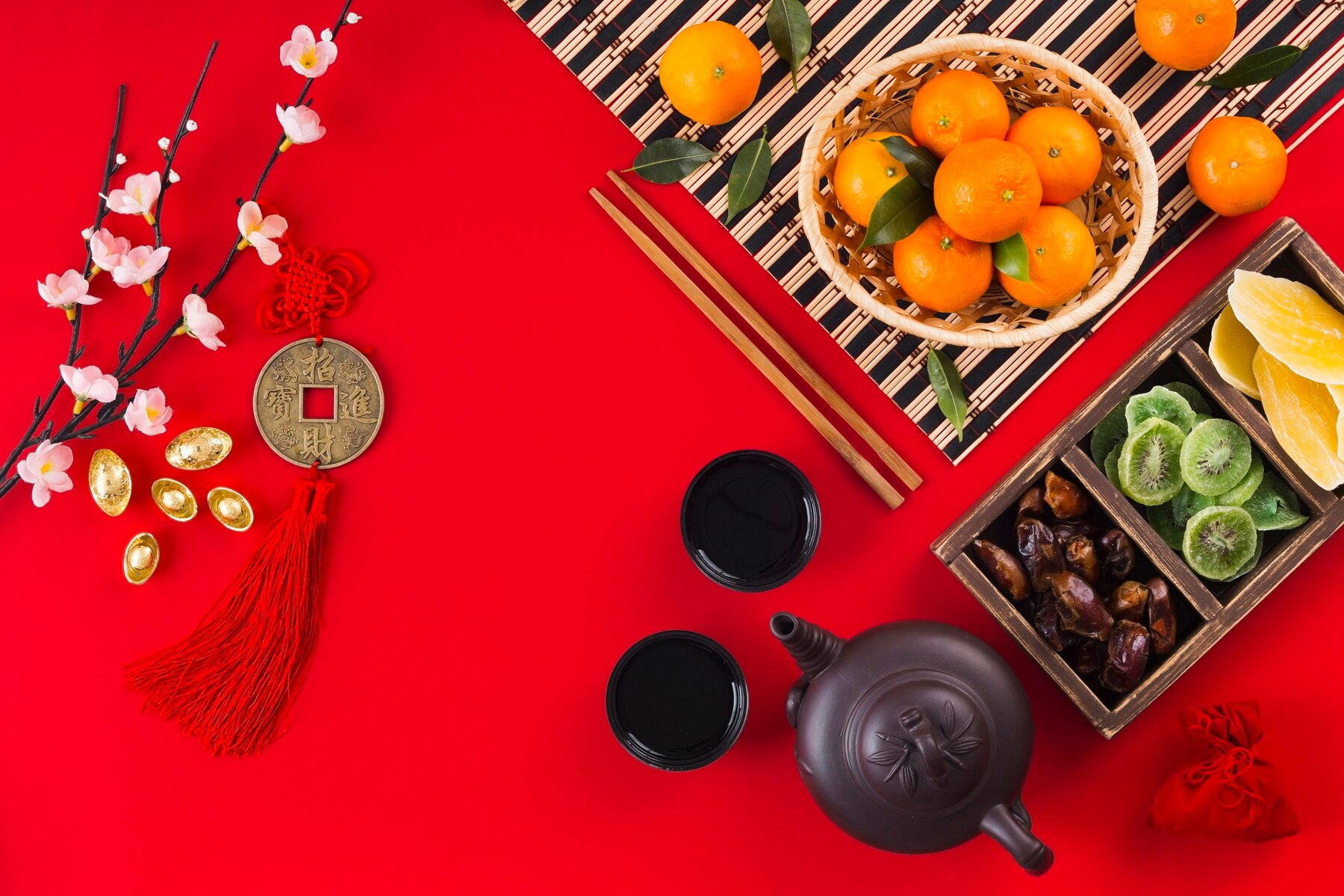Chinese New Year, also known as the Spring Festival, is a time of joy, family gatherings, and elaborate feasts. One of the most fascinating aspects of this celebration is the food, which holds deep cultural significance. Traditional Chinese New Year foods are more than just delicious; they symbolize prosperity, good luck, and happiness for the coming year. Let’s explore these festive Chinese dishes and understand their symbolic meanings.
Read more on the Recipe of Thai Curry with Chicken
Dumplings (Jiaozi)
1.Symbolism
Dumplings are a staple during Chinese New Year, especially in Northern China. Their shape resembles ancient Chinese money, known as ingots, making them a symbol of wealth and prosperity.
2.How They’re Made
Dumplings are typically made with a filling of minced meat and finely chopped vegetables, wrapped in thin dough. Families often gather to make dumplings together, making it a fun and meaningful activity.
3.Significance
Eating dumplings at midnight on New Year’s Eve is believed to bring financial success in the new year. Some families even hide a coin inside one of the dumplings; the person who finds it is said to have extra good fortune.
Spring Rolls
1.Symbolism
Spring rolls are another popular festive Chinese dish. Their golden-brown color and cylindrical shape are associated with wealth and prosperity, resembling gold bars.
2.How They’re Made
Spring rolls are filled with a mixture of vegetables, meat, or shrimp, then rolled in a thin pastry and fried until crispy.
3.Significance
Eating spring rolls during Chinese New Year is thought to bring a year filled with prosperity and good fortune. They are especially popular in Eastern China.
Fish (Yu)
1.Symbolism
In Chinese, the word for fish (“yu”) sounds like the word for “surplus” or “abundance.” Thus, serving fish during Chinese New Year symbolizes an abundance of wealth and prosperity.
2.How It’s Prepared
Fish is often steamed with ginger and soy sauce, a method shared with some Thai-style preparations. It’s important that the fish is served whole, with the head and tail intact, to represent a good beginning and end to the year.
3.Significance
Traditionally, families leave some of the fish uneaten, to ensure that the household will have surplus in the new year. This practice embodies the saying, “May you always have more than you need.”
Nian Gao (Rice Cake)
1.Symbolism
Nian Gao, or rice cake, is a sweet sticky cake made from glutinous rice flour. The name “Nian Gao” sounds like “year high,” symbolizing growth, progress, and the promise of a better year.
2.How It’s Made
Rice cakes can be steamed or fried and are often sweetened with sugar. Some variations include additional ingredients like red beans or dates.
3.Significance
Eating Nian Gao during Chinese New Year is believed to bring success and prosperity. It’s a popular gift during the festival, symbolizing wishes for a successful and elevated year.
Longevity Noodles
1.Symbolism
Longevity noodles represent long life and happiness. Their length and uncut form symbolize a long and healthy life.
2.How They’re Made
These noodles are longer than usual and can be stir-fried or served in broth. They are typically made with wheat flour.
3.Significance
During Chinese New Year, people eat longevity noodles to wish for a long and healthy life for themselves and their loved ones. It’s important not to cut the noodles while cooking or eating, as this could symbolize cutting one’s life short.
Tangyuan (Sweet Rice Balls)
1.Symbolism
Tangyuan are sweet rice balls typically served in a sweet soup. Their round shape symbolizes unity and togetherness.
2.How They’re Made
Tangyuan are made from glutinous rice flour and can be filled with ingredients like sesame paste, red bean paste, or peanut butter.
3.Significance
Eating Tangyuan during Chinese New Year represents family unity and harmony. They are particularly associated with the Lantern Festival, which marks the end of the New Year celebrations.
Oranges and Tangerines
1.Symbolism
Oranges and tangerines are commonly seen during Chinese New Year. Their bright color and round shape symbolize fullness and wealth.
2.How They’re Presented
These fruits are often displayed in the home or given as gifts. They are also used in traditional decorations.
3.Significance
In Chinese, the words for orange and tangerine sound like “luck” and “wealth,” respectively. Giving and receiving these fruits during the New Year is believed to bring good fortune and prosperity.Traditional Chinese New Year foods are more than just festive dishes; they carry deep cultural significance and symbolize various wishes for the new year.
Join us for an authentic culinary experience that honors the rich traditions and flavors of Chinese New Year . Reserve your table now at Solanas and start the new year with delicious food and good fortune. Call us or visit our website to book your festive dining experience today!
Read more on Mastering the Art of Chinese & Thai Stir-Frying
FAQs
1.What is the significance of traditional Chinese New Year foods?
Traditional Chinese New Year foods are deeply symbolic. They represent wishes for prosperity, good luck, health, and happiness in the coming year.
2.Why are dumplings popular during Chinese New Year?
Dumplings are popular because their shape resembles ancient Chinese money, symbolizing wealth and prosperity.
3.What do fish symbolize in Chinese New Year celebrations?
Fish symbolize surplus and abundance. Serving fish during the New Year ensures that the household will have more than enough in the coming year.
4.What is the cultural significance of Nian Gao?
Nian Gao, or rice cake, symbolizes growth and progress. Eating it during Chinese New Year is believed to bring success and an elevated status.
